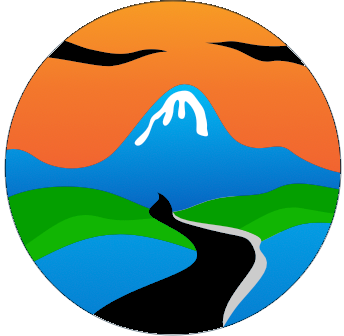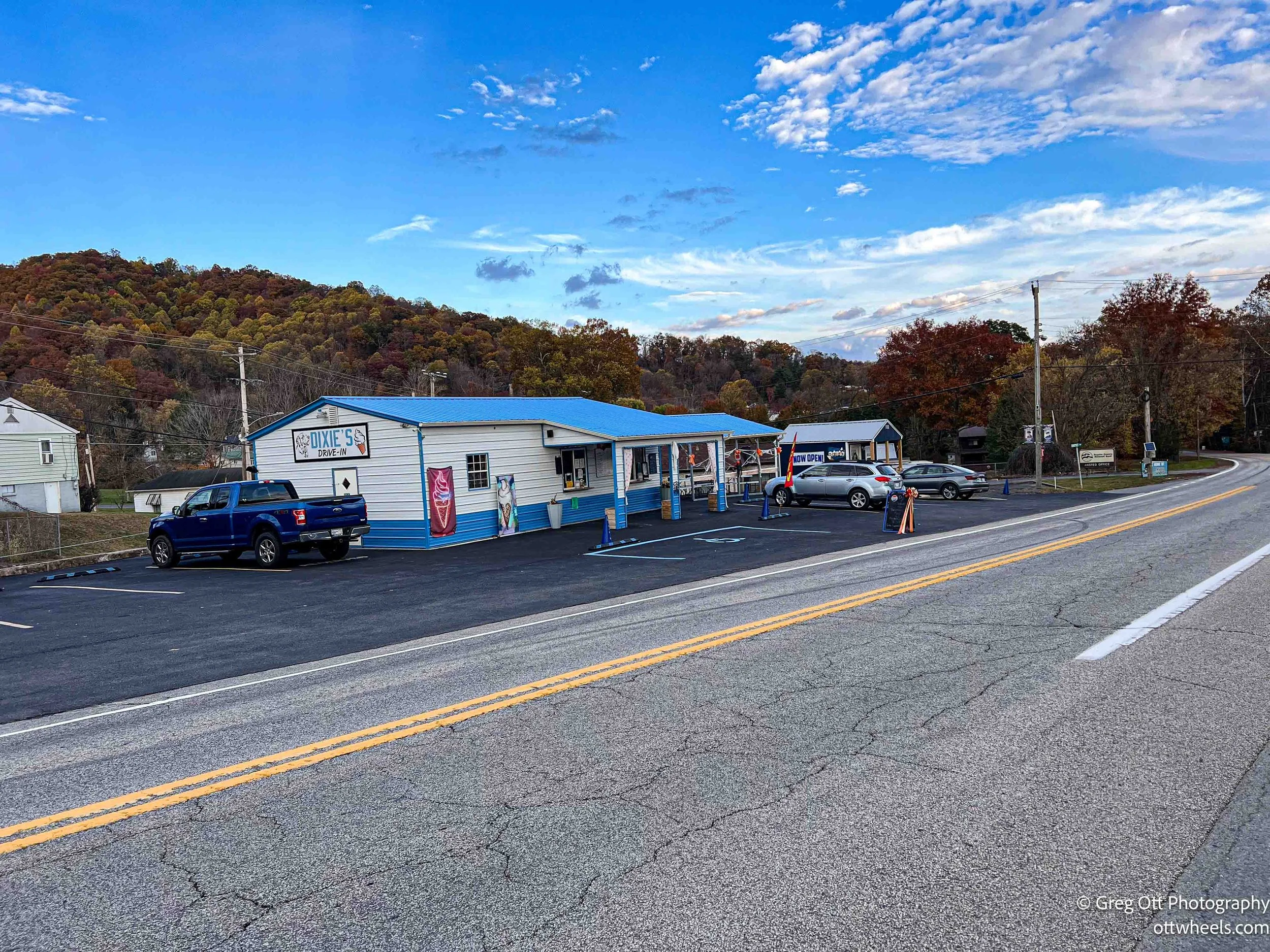New River Gorge National Park and Preserve
Traveling to national parks at the moment is difficult. The National Parks Service is currently shut down, but some local governments—West Virginia among them—understand the impact of the shutdown on their local economies. So, I was a little surprised to find the Canyon Rim Visitor Center open in the New River Gorge National Park and Preserve. The staff were extremely professional, asking all the right questions and providing the details I needed to navigate the park.
There’s the usual film and educational displays at the center. Also, the view from the back of the building is spectacular. From the visitor center, there’s an overlook near the New River Gorge Bridge. Steps lead down the side to a lower-level deck that offers a different view of the valley. There were quite a few people along the trail.
I headed back to the van and drove down the hill on Fayette Station Road, a one-way route. The road is fairly steep with some very tight turns. The trees were stunning on the way down. I stopped near the base of the bridge to grab a few photos and heard a woman’s voice calling out in the distance. I couldn’t tell where it was coming from until a couple nearby mentioned people walking across the bridge from underneath. They pointed out that the walkers were tethered to a line that ran the length of the bridge, and the voice above was guiding them and describing the view. I then noticed to bumper stickers on the end of the guardrail, “Bridge Walk“, and “I did it“.
I continued to the bottom of the hill and parked beside the river, not realizing there was a parking lot on the opposite side. I walked all around the area, watching as the sun broke through the clouds and lit up the trees. It was peaceful and quiet.
From there, I drove to Babcock State Park to see the famous grist mill. I had to get a photo—the mill is one of those spots every landscape photographer wants to capture. As I was getting out of the van, a couple walked by and said, “Nice setup.” in reference to the van. We talked for a while about traveling, and I gave them a quick look inside the van.
There wasn’t much water flowing at the grist mill, and at least half the leaves had already fallen, but it was still fun walking around and taking fall photos.
Tunnel disaster
I stopped to read a sign about the Hawk’s Nest Tunnel disaster. It is one of the darkest chapters in West Virginia’s history. In the early 1930s, about three thousand men were hired to dig a tunnel through Gauley Mountain to divert the New River for a hydroelectric power project. Most were poor and many were Black migrant laborers brought in from the South. They worked deep underground in clouds of silica dust, drilling through nearly pure sandstone without masks or ventilation.
The result was devastating. Official records at the time listed 109 deaths, but a later congressional hearing put the number closer to 476 between 1930 and 1935—and some believe it was even higher. The tragedy forced the country to recognize acute silicosis as an occupational lung disease and led to the first legislation to compensate workers for such hazards. Standing by the plaque near Hawk’s Nest, it’s hard not to imagine the noise, dust, and desperation inside that mountain, and even harder to believe how long it took for the story to be told.
Hawks Nest
I probably didn’t take the most efficient route to the sites. My next stop was north of the Canyon Rim Visitor Center at the overlook in Hawks Nest State Park. The colors were brilliant. As I walked to the overlook, some of the trees glowed bright orange, almost with an oriental look. I was photographing one when a man from India stopped and said, “That’s a beautiful tree.”
The panoramic view was spectacular.
Driving through Ansted, I spotted an ice cream shop called Dixie’s Drive-In. I had to stop. It was the end of the day and their last day before closing for the season. I heard the owner tell the couple ahead of me that everything was half-price. They had a lot of ice cream left, and the portions were generous. I ordered the smallest pineapple sundae they had and received a huge one—served in a sixteen-ounce Styrofoam cup, brimming over. The ice cream was good, too.
Fayetteville
Fayetteville has a different feel than many other places in West Virginia. It’s quiet and a bit removed from the main highways, with only a handful of homes and businesses spread along the ridge. The town seems to exist between eras—modern enough to stay connected, but still carrying traces of the past in its old buildings and small roadside plaques. It’s the kind of place you might drive through without realizing its history, yet it played a small part in the Civil War and the growth of the region that followed.
I ended the day at the South Side Junction Tap House. I had the Heady Veggie Burger with unsalted fries and a pilsner. I then walked the old town. I remember having read about the civil war battle that took place here. There’s a plaque in the center that describe the battle of Fayetteville, “On September 10, 1862, soldiers under the command of Confederate Gen. W.W. Loring attacked Union forces in Fayetteville under Col. Edward Siber, driving them out of the town towards Charleston, where fighting continued as Loring's men captured the city. Confederates held the Fayetteville area until late October, when Gen. Jacob Cox's larger Union force drove them out.“
I didn’t have much luck finding a place to stay. West Virginia’s state park reservation system won’t let you reserve a site on the same day. So, I headed back to the same Walmart which was only two miles away.























